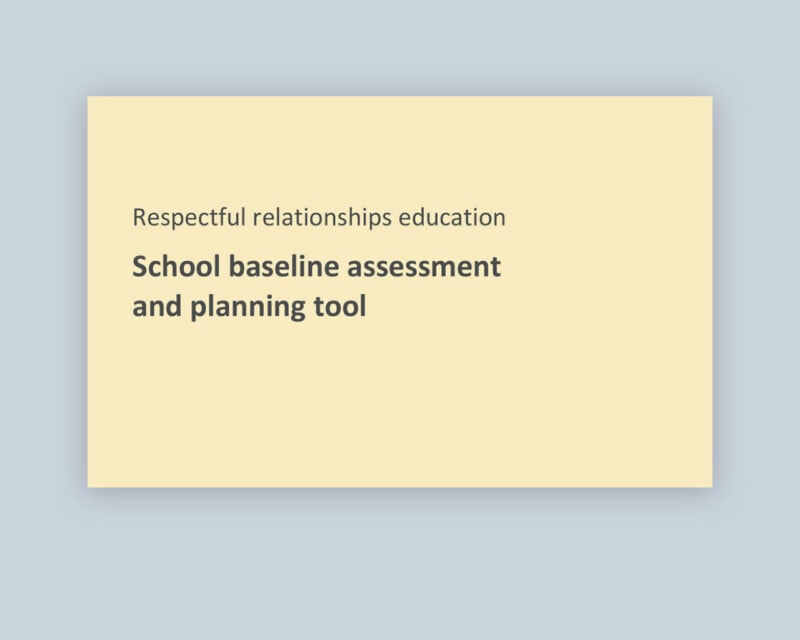On this page
Overview
This toolkit has been developed to support schools in understanding, planning, implementing and sustaining a whole-of-school approach to preventing gender-based violence by promoting gender equality and respectful relationships.
The toolkit was first developed as part of the Respectful relationships education in schools (RREiS) pilot in 2015. In this second edition we have expanded the toolkit and added checklists, real life examples, easy to understand graphics and examples of how respectful relationships might look in your school, as well as glossaries and definitions to help you learn about and implement respectful relationships education in your school.

Toolkit – Overview

Toolkit – Implementation steps
The Respectful relationships education toolkit consists of two documents:
- Overview – includes the evidence, background information and components of a whole-of-school approach to preventing gender-based violence in schools.
- Implementation steps – outline the actions to be undertaken at each stage of the implementation cycle.
Respectful relationships education is designed to be adaptable so that schools across Australia can support the implementation of a whole-of-school approach to this work.
Each school is unique and will be at different stages of addressing gender-based violence and promoting respectful relationships, non-violence and gender equality. The toolkit has information to assist you at every stage.
Related

Planning tools to help schools record their current practice as well as opportunities for preventing gender-based violence.

3 minute read
Understand the evidence behind RRE and preventing gender-based violence in schools as well as the benefits.